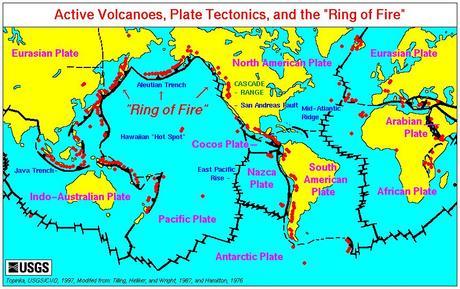Eric touched on this in his earlier piece on renewable energy and disasters: the tsunami that literally erased some towns in Northeastern Japan has nothing to do with climate change. There are still people who, through their own deliberately misleading bloviation or due to misinformation from others, think and/or promote the false notion that there is a link between the two. Here we’ll lay out what causes tsunamis. A great interactive article from BBC is a great place to start.
Though tsunamis can occur because of landslides (into oceans or lakes; tsunamis have actually been recorded in lakes) the most common and most devastating cause of tsunamis is from earthquakes that occur at sea. Earthquakes happen when the plates that make up the Earth’s surface suddenly move against each other. Energy from an earthquake can vertically jolt the seabed (sometimes by several meters). This movement displaces enormous amounts of water. Moving away from the epicenter, large waves begin moving through the ocean. In deep water, the tsunami can move literally at jet speeds of 400-500mph, though the height of the waves is minimal at this point. The tsunami slows when it reaches more shallow water near the coast but the waves increase in height. Before it strikes, the ocean near the shore suddenly retreats, exposing expanses of beach and the sea floor. This is the only visible evidence or warning that a tsunami gives before it strikes.
To see the absolutely massive scale of destruction tsunamis can cause, watch the video below. You see the evolution of the tsunami’s path of demolition, from a relatively benign-looking movement up a river to an absolutely massive force decimating everything in its way. It’s really beyond words.
[Image]


